#Onondaga Creek
Text
In a rare moment of return for East Coast Native Americans, the Onondaga Nation has had 1,023 acres of ancestral land in New York state returned to them.
The land in the Tully Valley includes the headwaters of Onondaga Creek, more than 45 acres of wetland and floodplains, and approximately 980 acres of forests and fields.
21 notes
·
View notes
Text

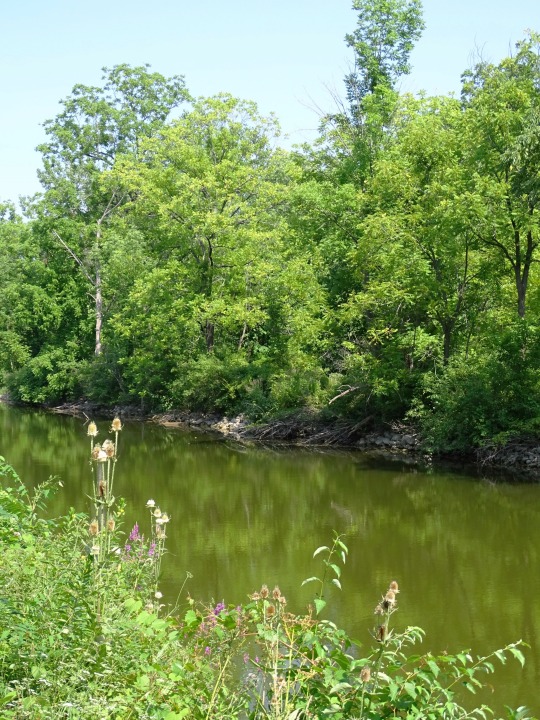
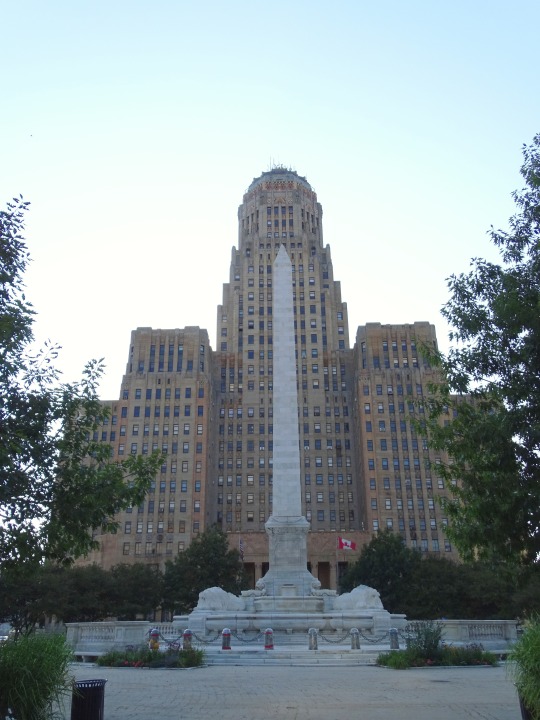
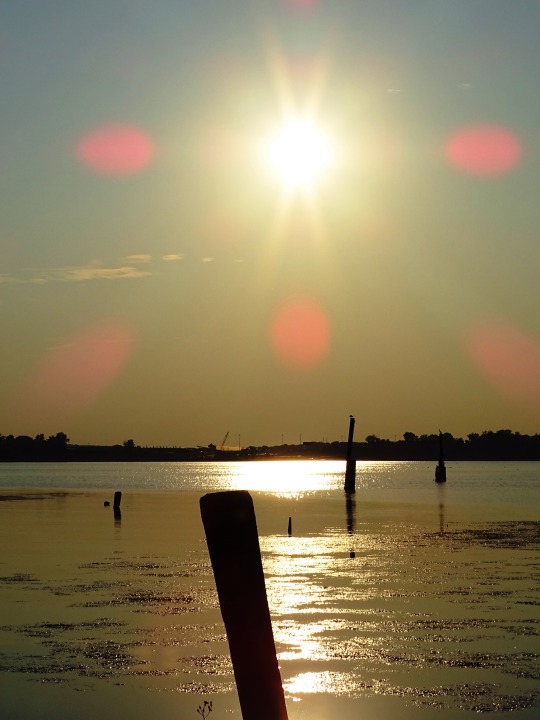
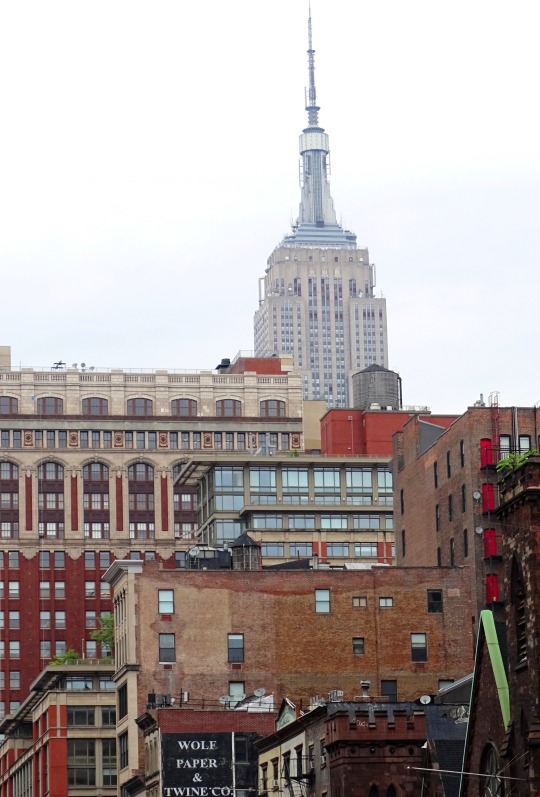

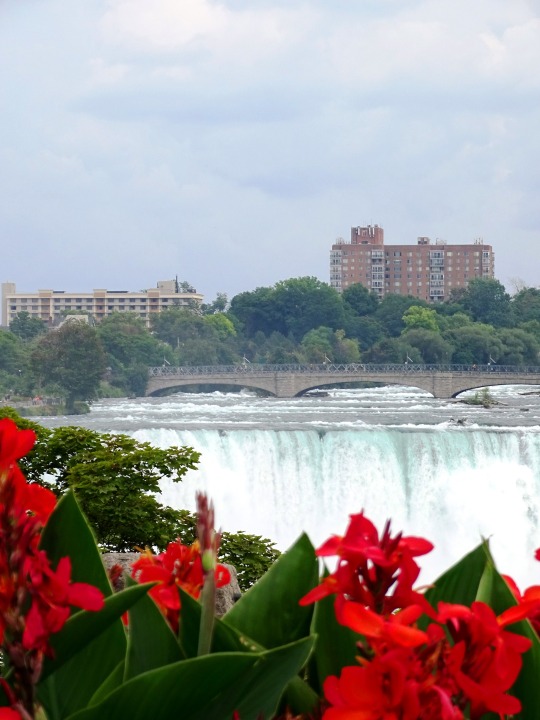
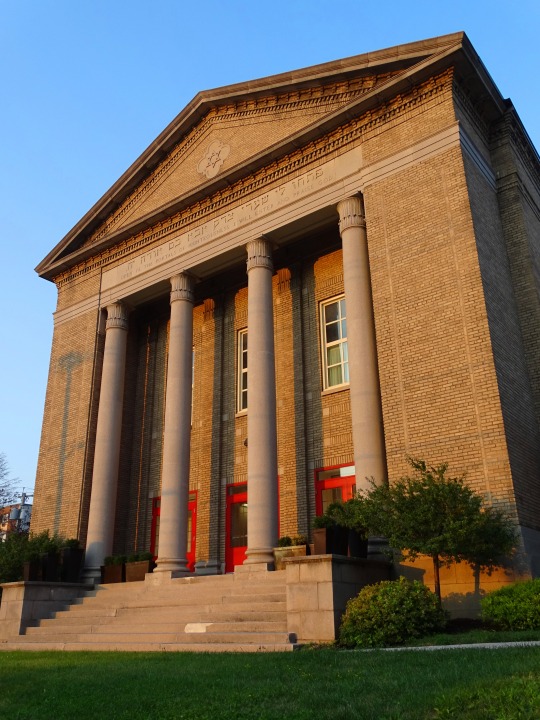
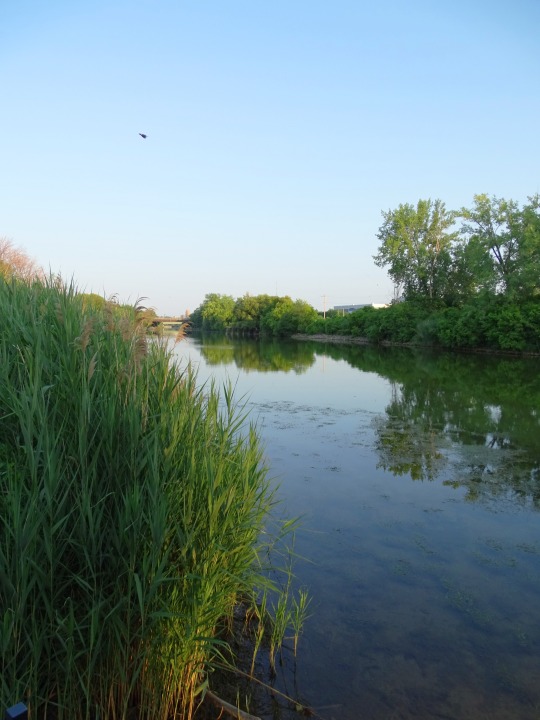
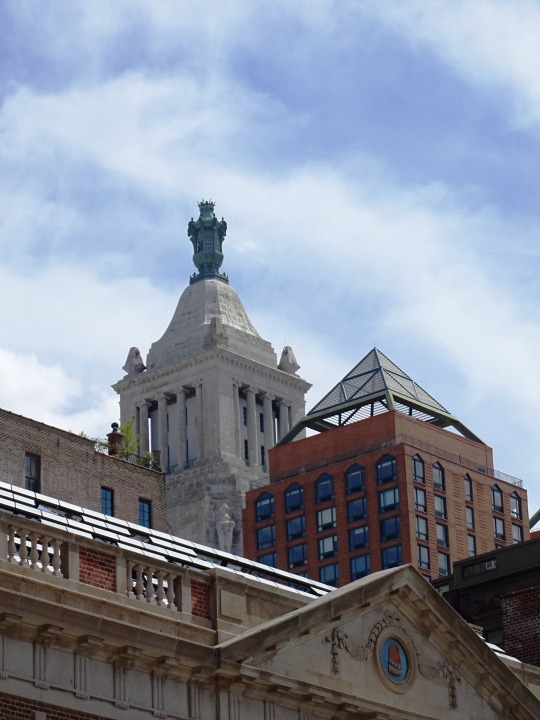
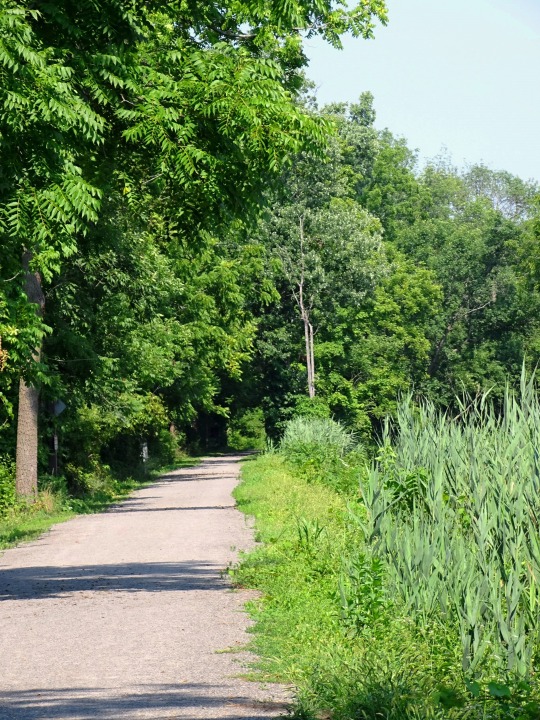

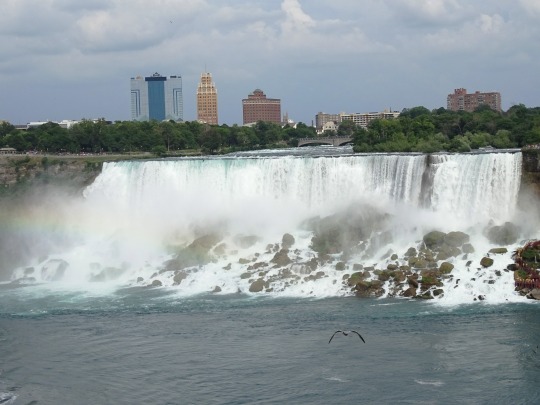
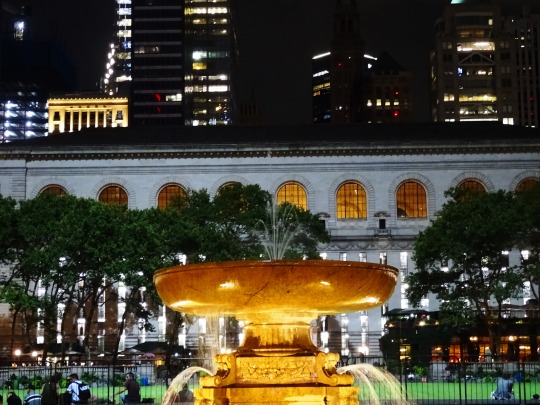
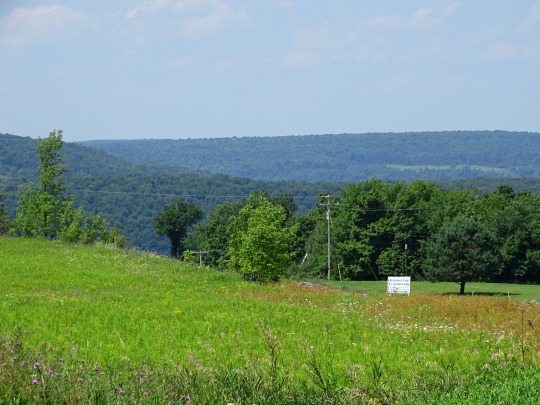

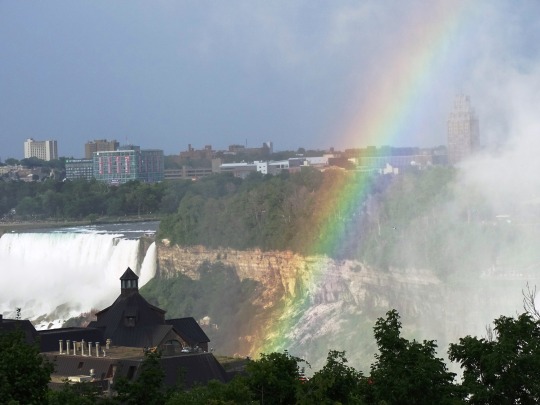
New York ratified the United States Constitution and becomes the 11th state of the United States on July 26, 1788.
#Buffalo#Port Byron#Onondaga Lake#Syracuse#former Temple Adath Yeshurun#Catskill Mountains#Onondaga Creek#Niagara Falls#American Falls#New York#ManhattanN#US Constitution#New York City#26 July 1788#235th anniversary#US history#original photography#travel#vacation#tourist attraction#architecture#cityscape#landscape#USA
1 note
·
View note
Text
Onondaga Nation Celebrates First Land Return of 1,000 Acres in New York's Tully Valley Following Legal Settlement https://www.goodnewsnetwork.org/onondaga-nation-celebrate-first-substantial-land-return-with-1000-acres-of-new-yorks-tully-valley-won-in-legal-settlement/
In a rare moment of return for East Coast Native Americans, the Onondaga Nation has had 1,023 acres of ancestral land in New York state returned to them.
The land in the Tully Valley includes the headwaters of Onondaga Creek, more than 45 acres of wetland and floodplains, and approximately 980 acres of forests and fields.
The agreement is a result of the March 2018 Natural Resource Damage Assessment and Restoration (NRDAR) settlement between the Natural Resource Trustees and Honeywell International, Inc.
Honeywell, manufactures of household appliances like air conditioners, were found to have been polluting Onondaga Lake in the Tully Valley, Central New York, for almost 100 years, and it had begun to spill into neighboring Onondaga lands.
They have settled on orders to pay $5 million dollars to the Natural Resource Trustees, give the 1,023 acres of land over to the Onondaga, restore several hundred acres of polluted area, and construct 18 projects related to conservation and recreation, of which 7 have been completed.
“It is with great joy that the Onondaga Nation welcomes the return of the first substantial acreage of its ancestral homelands. The Nation can now renew its stewardship obligations to restore these lands and waters and to preserve them for the future generations yet to come,” said Onondaga Nation Chief Tadodaho Sidney Hill.
For the Onondaga people, Onondaga Lake and Onondaga Creek are sacred. They are considered living relatives, central to the Onondaga worldview and spirituality, the tribe detailed in a statement.
Secularly, the cold waters of Onondaga Creek support a small population of brook trout, a population which may be fully restored with proper stewardship. The wetlands, floodplains, forests and fields are home to wildlife such as great blue heron, songbirds, waterfowl, hawks, bald eagles, frogs, bats, and other mammals including white-tailed deer.
“We look forward to drawing upon the Onondaga Nation’s expertise and Indigenous knowledge in helping manage the area’s valuable wildlife and habitat,” said Sect. of the Interior, Deb Haaland.
It’s more common now than ever that tribal nations are recovering rights to use their ancestral lands as they always had, but for tribes in the super-developed Mid-Atlantic region, these opportunities are rare.
However as the Onondaga point out, recent world-wide land surveys have shown that 80% of the world’s biodiversity is currently located in areas stewarded by indigenous peoples, or lands contested as such, despite the fact this amounts to less than half the land of the planet.
As such, they are keen to show what indigenous stewardship can bring to the biodiversity of America’s East Coast, and the current plan with state officials is to turn the Onondaga Lake and Tully Valley into a wildlife sanctuary, but one with ample opportunities for recreation, as Honeywell were ordered to construct many boat launching sites along the lake and rivers.
578 notes
·
View notes
Text
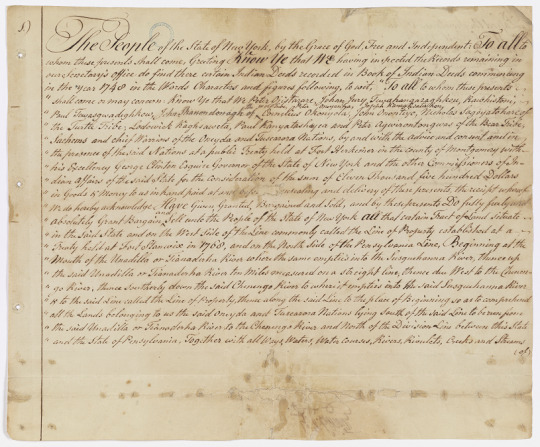


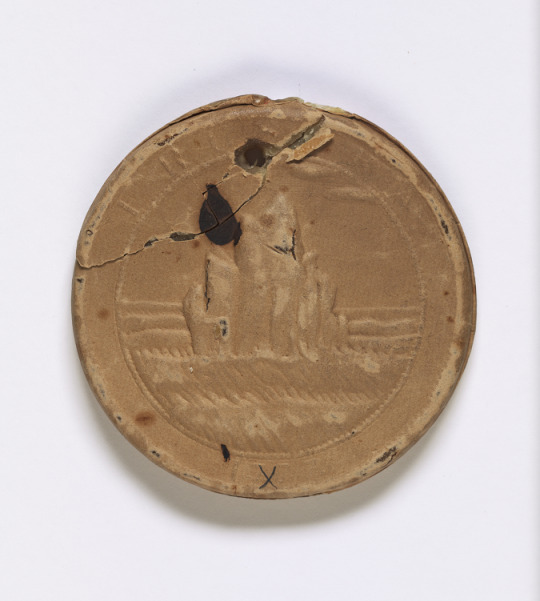
Ratified Indian Treaty 19A (first and last pages), April 11, 1793.
This treaty with the Six Nations (Seneca, Cayuga, Onondaga, Oneida, Mohawk, and Tuscarora) included this wax Great Seal of the State of New York.
Record Group 11: General Records of the United States Government
Series: Indian Treaties
Image description: A circular seal, just over three inches in diameter, made of wax covered with paper. Depicted in the center is a sun with a face, rising over hills. Below the hills is “EXCELSIOR”. Around the border of the seal is “THE GREAT SEAL OF THE STATE OF NEW YORK”. There is a hole through the seal at the top.
Image description: Reverse of the circular seal. In the center are spiky rocks jutting out of the water. There are letters at the top of the border, but it’s difficult to see what they say. At the bottom of the seal is an ink “X”. There is a hole through the seal at the top.
Transcription:
1)
The People of the State of New York, by the Grace of God, Free and Independent: To all to
whom these presents shall come, Greeting Know ye that We having inspected the Records remaining in
our Secretary's Office do find there certain Indian Deeds recorded in Book of Indian Deeds commencing
in the year 1748 in the Words Characters and figures following, to wit, "To all to whom these presents
"shall come or may concern: Know ye that We Peter Ojistarare, Johan Jesry Towahangaraghkou, Rawhistoni,
"Paul Tewasgwadeghkow, John Skanondonagh of the wolf tribe, Peter Oneyanha, Joseph Kanaghsaterhon, Cornilius Okonyota, John Onontiyo, Nicholas Sagoyatokare of
"the Turtle Tribe; Lodowick Kaghsaweta, Paul Kanyatashayea and Peter Agwirontongwas of the Bear Tribe,
"Sachems and chief Warriors of the Oneyda and Tuscarara Nations, by and with the advice and consent and in
"the presence of the said Nations at a public Treaty held at Fort Herkimer in the county of the Montgomery with
"his Excellency George Clinton Esquire Governor of the State of New York and the other Commissioners of In-
"dian Affairs of the said State for the consideration of the sum of Eleven Thousand five hundred Dollars
"in Goods & Money to us in hand paid at and before [illegible] ensealing and delivery of these presents, the receipt whereof
"We do hereby acknowledge Have Given, Granted, Bargained and Sold, and by these presents Do fully freely and
"Absolutely Grant Bargain and Sell unto the People of the State of New York all that certain Tract of Land situate
"in the said State and on the West Side of the Line commonly called the Line of Property established at a
"Treaty held at Fort Stanwix in 1768, and on the North Side of the Pensylvania Line, Beginning at the
"Mouth of the Unadilla or Tianaderha River where the same empties into the Surquchanna River, thence up
"the said Unadilla or Tianaderha River ten Miles measured on a straight line, thence due West to the Chenen-
"go River, thence Southerly down the said Chenengo River to where it empties into the said Sasquchanna River
"& to the said Line called the Line of Property, thence along the said Line to the place of Beginning so as to comprehend
"all the Lands belonging to us the said Oneyda and Tuscarora Nations lying South of the said Line to be run from
"the said Unadilla or Teanaderha River to the Chenengo River and North of the Division Line between this State
"and the State of Pensylvania, Together with all Ways, Waters, Water courses, Rivers, Riverlets, Creeks and Streams
(of)
[page 2]
16.)
"Onaakaronton his x mark LS Tehoghweakaronto his x mark LS Kaghnunrayen his x mark LS Agwirontong-
"waghs his x mark LS Anonghsighraghtha his x mark LS Oniatariyoo his x mark LS Kaneyaggh his x mark
"LS Geo: Clinton LS Pierre Van Cortlandt LS Ezra L Hommedieu LS Abm Ten Broeck LS Peter Gansevoort-
"Junr. LS Richd. Varick LS Witnesses Present Sam Kirkland Missry. Interpreter John Lansing Junr. Jos.
"Brant, David Hill, John Tayler, Malachi Treat, Abm Hardenbergh, Peter Otsiequette, Aghwistonisk his x mark,
"Oneyanka his x mark, Coll. Honyery his [mark] mark, Oneida Chiefs. Onangaiekhon his x mark, Fhoghnawayen
"x Senekas. - Be it Remembered that on the Twenty fifth day of November in the year one thousand seven hundred and
"ninety one before me John Sloss Hobart one of the Justices of the Supreme Court of the State of New York came Samuel Kirkland,
"Clerk, Missionary and Interpreter to the Six Nations of Indians, who made oath that he was present and did see the Twenty
"-Eight Sachems, Chiefs and Warriors of the Onondaga Nation of Indians whose names are written opposite to their respec-
"tive Seals severally seal and deliver the within written Ratification as their Voluntary act and deed for the purposes and uses therein mentioned,
"he having previously thereto faithfully and truly interpreted the Contents of the same from the English into the Indian Language unto the said
"Sachems, Chiefs and Warriors in such a manner that it was fully understood by them and that he also saw the Commissioners on the part of the
"State of New York in the said Ratification Mentioned severally seal and deliver the same as their Voluntary act and deed for the purposes and
"uses therein mentioned, and that John Lansing Junr. and the Eleven other persons whose names are signed as Witnesses were present and did see
"the said parties Seal and deliver the said Ratification; and I having Examined the same and found no material alteration therein do al-
"low it to be recorded Jno. Sloss Hobart. The preceding Instrument refers to the Treaty recorded in pages 150 & which is dated the 12th.
"of September 1788, and is a true copy of the Original, Examined and compared therewith this 5th. day of April 1793 (the words "alias Land Car-
"rier" in page 170 being interlined) By me Robert Harpur D Secry."
~~~~~~~~
All which WE have caused to be Exemplified by these Presents: In Testimony whereof
We have caused these our Letters to be made patent and the Great Seal of our said State to be hereunto affixed Witness
our Trusty and well beloved George Clinton Esquire Governor of our said State General and Commander in chief
of all the Militia and Admiral of the Navy of the same, at our City of New York; this Eleventh day of April in the year of
our Lord one thousand seven hundred and Ninety-Three, and in the Seventeenth year of our Independence.~
#archivesgov#April 11#1793#1700s#Early America#Native American history#American Indian history#Indigenous American history#Iroquois Confederacy#Seneca#Cayuga#Onondaga#Oneida#Mohawk#Tuscarora#New York#Indian treaties
77 notes
·
View notes
Text
THIS DAY IN GAY HISTORY
based on: The White Crane Institute's 'Gay Wisdom', Gay Birthdays, Gay For Today, Famous GLBT, glbt-Gay Encylopedia, Today in Gay History, Wikipedia, and more … December 27


c.15 AD – John the Evangelist. The Gospel of John makes several references to "the disciple Jesus loved", and to "the Beloved Disciple", including references to special priviliges that Jesus gave to this relationship, not granted to other disciples. This is taken by some Biblical scholars as evidence that Jesus had a relationship with this disciple which was at least emotionally intimate, and possibly sexual. In medieval Northern Europe, there was even a long-standing tradition that he and Christ were the bridal couple at the Cana Wedding Feast.
It is not clear whether this "Beloved Disciple" was John himself (although it could have been), or someone else possibly Lazarus.
In any event, there are suggestions from elsewhere that John may have had a same-sex relationship with another, his scribe Prochorus, after Christ's death. Prochorus later became bishop of Nicomedia, and in turn, formed a fresh relationship of his own with a younger man, Irenaeus.

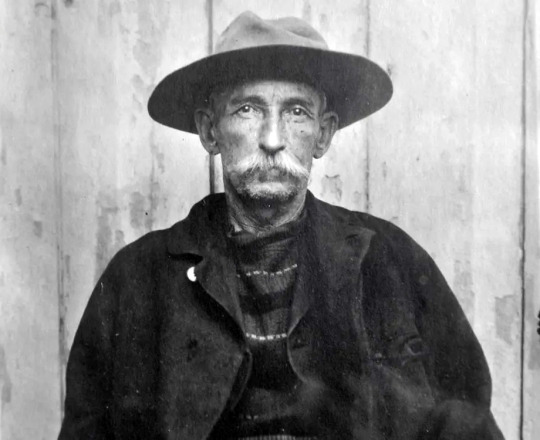
1846 – Ezra Allen Miner, more popularly known as Bill Miner, was an American bandit, originally from Bowling Green, Kentucky, who served several prison terms for stagecoach robbery (d.1913). Known for his unusual politeness while committing robberies, he was widely nicknamed the Grey Fox, Gentleman Robber or the Gentleman Bandit. He is reputed to have been the originator of the phrase "Hands up!" Legend has it that Bill Miner admonished his cohorts to fire their guns when in danger of capture but "do not kill a man".
Miner was born Ezra Allen Miner in Vevay Township, near Onondaga, Ingham County, Michigan. He never legally changed his first name, but regarded William Allen Miner as his true name throughout most of his life. He was arrested for the first time in 1866 in San Joaquin County, California and served time there. He then formed a partnership with Bill Leroy to rob a stagecoach. Leroy was caught and lynched, but Miner escaped. He was later caught for another robbery in Tuolumne County, California and was released from San Quentin in 1901.
After his third prison term, Miner moved to British Columbia in Canada, where he adopted the pseudonym George Edwards and is believed to have staged British Columbia's first-ever train robbery on September 10, 1904 at Silverdale about 35 kilometres (22 mi) east of Vancouver, just west of Mission City.
Miner was eventually caught after a botched payroll train robbery near Kamloops at Monte Creek (then known as "Ducks"). Choosing the wrong car, they managed only to rob $15 plus a bottle of kidney pills that Miner picked up off of a shelf. Miner and his two accomplices, Tom "Shorty" Dunn and Louis Colquhoun, were located near Douglas Lake, British Columbia after an extensive manhunt. A posse surrounded them while they were lunching in the woods. Miner presented himself as George Edwards and claimed that he and his cohorts were prospectors. The officer in charge of the posse suspected he had encountered the nefarious train-robbing gang and challenged the claim, putting them under arrest.
Dunn attempted to fire at the police and was shot in the leg. He gave up quickly after being wounded. Colquhoun was disarmed by an officer standing nearby and Miner never drew his weapon. Miner's arrest and subsequent trial in Kamloops caused a media spectacle. Apparently the most damning evidence against him was the bottle of kidney pills that Miner had picked up during the Ducks robbery. Upon his conviction, he, Dunn and Colquhoun were transported by train to the provincial penitentiary in New Westminster. By that time, Miner's celebrity status had risen to the point that the tracks were reputedly lined with throngs of supporters, many of whom expressed satisfaction with the fact that someone had taken the very unpopular CPR to task.
While serving time in the B.C. Penitentiary, Miner escaped in 1907 and was never recaptured in Canada. He moved back to the United States, becoming once again involved in robberies in the South at Gainesville in 1909. There, he served more prison time, and escaped twice.
He died in the prison farm at Milledgeville, Georgia, of gastritis, contracted from drinking brackish water during his previous escape attempt.Researchers Mark Dugan and and John Boessenecker contend that Miner was the only known homosexual outlaw in the American "Wild West." In his younger days, "Miner, who had a slender, girlish figure, no doubt was a target for sex-starved older and stronger convicts." Later, they claim, he lured young men into crime and preyed on them sexually. Whatever Miner's sexual preference, the only evidence of Miner's homosexuality surfaced in 1903 when the Pinkerton Detective Agency stated that Miner "is said to be a sodomist and may have a boy with him."


1932 – On this date Fritz "Fred" Klein the Austrian-born American sex researcher, psychiatrist and pioneering Bisexual rights activist was born (d.2006). He's best known as the inventor of the Klein Sexual Orientation Grid. He was also a pioneering bisexual rights activist, who was an important figure in the modern LGBT rights movement.
As a self-identified bisexual, Klein was surprised at the lack of literature on his sexuality in the New York Public Library in 1974. He was inspired to place an advertisement in a New York City alternative newspaper the Village Voice and founded a ground-breaking social and support group for the Bisexual Community called Bisexual Forum.
He devised the Klein Sexual Orientation Grid, a multi-dimensional system for describing complex sexual orientation, similar to the "zero-to-six" scale Kinsey scale used by Alfred Kinsey, but measuring seven different vectors of sexual orientation and identity (sexual attractions, sexual behavior, sexual fantasies, emotional preference, social preference, lifestyle and self-identification) separately, as they relate person's past, present and ideal future.
Klein published The Bisexual Option: A Concept of One Hundred Percent Intimacy in 1978, based on his research, the world's first real psychological study of bisexuality. He also co-authored Man, His Body, His Sex in 1978, and published Bisexualities: Theory and Research in 1986 and Bisexual and Gay Husbands: Their Stories, Their Words in 2001. He published a novel, Life, Sex and the Pursuit of Happiness in 2005.

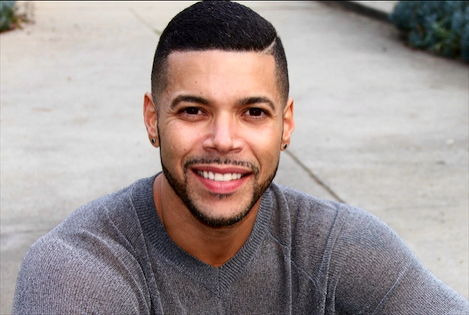
1973 – Wilson Cruz (born Wilson Echevarría) is an American actor known for playing Rickie Vasquez on My So-Called Life and the recurring characters of Junito on Noah's Arcand Dr. Hugh Culber on Star Trek: Discovery. As an openly gay person of Puerto Rican ancestry, he has served as an advocate for gay youth, especially gay youth of color.
Wilson Cruz was born in Brooklyn, New York to parents of Puerto Rican descent. His family eventually moved to Rialto, California where he attended Eisenhower High School, graduating in 1991. At age 19, Cruz came out to his parents as gay, first to his mother and then his father. While his mother was initially hurt and shocked, she eventually accepted the news. His father, however, threw him out of the house, and Cruz spent the next few months living in his car and at the homes of friends. He later reconciled with his father.
After coming out to his parents, Cruz went to Hollywood to seek work as an actor, intending to be open about his sexuality from the beginning of his career. In 1994 he was cast as Enrique "Rickie" Vasquez, a troubled gay teen, in the short-lived critically acclaimed cult classic TV series My So-Called Life. In one episode (entitled "So-Called Angels") drawn from Cruz's own life, Rickie comes out to his family, who throw him out of the house.
Cruz works with and advocates on behalf of LGBT youth, especially youth of color. He has volunteered his time as host for the Youth Zone, an online community at Gay.com for LGBT youth. He was the Grand Marshal of the 1998 West Hollywood Gay Pride parade and the 2005 Chicago Pride Parade. In 2008, he was the keynote speaker at the University of Illinois at Chicago's Lavender Graduation and Rainbow Banquet honoring graduating LGBT students.
Cruz joined the board of directors of GLAAD in 1997 in order to assist the organization through a leadership transition, and joined the staff of GLAAD in 2012 as a National Spokesperson and Strategic Giving Officer.

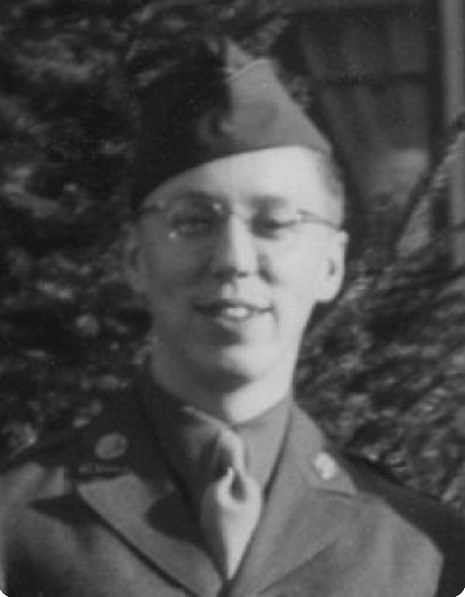
Rowland in his army days
1990 – Died: Chuck Rowland (b.1917) was a founding member of the Mattachine Society. He was active with ONE Inc. and founded the short-lived Church of One Brotherhood. Upon retiring from twenty years of teaching in 1982, Rowland founded Celebration Theatre in Los Angeles.
Chuck Rowland was born and grew up in tiny Gary, South Dakota. He recognized he was homosexual at an early age, and after reading a sympathetic series of articles in a pulp magazine, concluded that, if millions like him existed, they could be mobilized. At the University of Minnesota in the late 1930s, he was active on campus in support of the loyalists of Spain and other causes. While in grad school during 1939–40 he returned to Gary as a substitute for the spring term. On a weekend visit to Minneapolis, he met Bob Hull, a U of M undergraduate. The two had a brief romance, lived together, and became lifelong friends.
In 1942, Rowland was drafted into the army. Due to a severe injury, he stayed stateside during the war. While enlisted, Rowland became a charter member of the American Veterans Committee, a liberal alternative to the American Legion. After discharge in March 1946, he showed his talent as an AVC organizer, but his active support for veterans’ bonus legislation, which the group disparaged as “handouts,” led to his being “canned” by the AVC by 1947.
While in the AVC, Rowland noted that those he knew to be communists were some of AVC’s best organizers. “I was just carried along with this feeling of liberalism and the horror of the [anti-communist] reaction that was setting in,” he said, “and my feeling was that we had to move farther and farther to the left, as a result of which I got into the Communist Party.” Rowland returned to Minneapolis and headed the CP’s Midwest youth division.* (His value as an organizer trumped any chance of being expelled under the party’s unwritten anti-gay policy.) Rowland recruited Hull into the party, and the two contemplated Rowland’s childhood dream of organizing homosexuals.
In 1948, he quit the CP and move to Los Angeles, followed by Hull. There, at a labor school, the two met a teacher, Harry Hay, who also had done some thinking about a homosexual organization.
Harry Hay was developing a blueprint for a homophile support group, but before he could show it to them, Rowland and Hull moved to Mexico in the summer of 1950, intending to relocate permanently to avoid anti-Communist witch-hunts. They returned by fall, however, and received Hay’s completed prospectus, which they eagerly shared with Hull’s new boyfriend, Dale Jennings. The three met with Hay and his lover Rudi Gernreich on Armistice Day 1950, and eventually formed the (necessarily) secretive Mattachine Society and its public nonprofit, Mattachine Foundation.
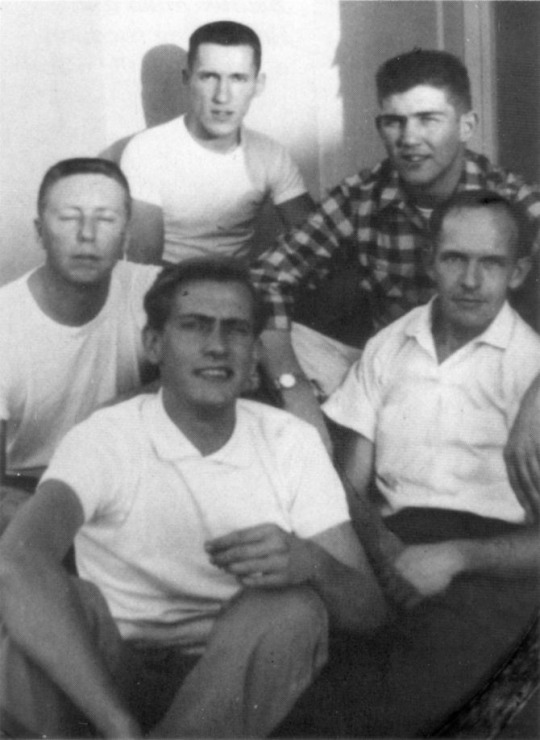
Mattachine members clockwise from top:
Chuck Rowland, Konrad Stevens,
unknown, Bob Hull, Jim Gruber
Rowland immersed himself in ONE Inc., writing for its magazine and directing its social services division. In 1954 he proposed that ONE open a guidance center staffed with gay counselors to mentor the waifs who found themselves alone in a new city. The project foundered, but Rowland nevertheless reported to ONE that in 1955 his division provided job placement and/or vocational counseling for nearly 100 people.
The early 60s saw Rowland involved in a possible FBI blacklisting (as both Red and gay), a failed business partnership, a dependence on intoxicants, mounting debt, and eviction. Finally, following the tragic suicide of his friend Bob Hull in May of 1962, Rowland returned to the Midwest. That summer he was hired as a credentialed high school teacher in Iowa. Obtaining his master’s degree in 1967, he chaired the theater arts department at a Minnesota college.
Upon retiring in 1982, Rowland returned to Los Angeles from his “exile,” as he put it, while admitting to “some worthy accomplishments” and meaningful relationships. In late 1982, with Jim Kepner and ex-Mattachino Martin Block, Rowland founded Celebration Theatre, billed as “the only theatre in Los Angeles dedicated exclusively to productions of gay and lesbian plays.” Kepner hosted its debut in the late spring of 1983, in his National Gay Archives.
Having been hospitalized in March 1090 with prostate cancer that proved to be terminal, Rowland “moved to Duluth where a former student fixed up a handsome apartment overlooking the lake,” according to a Kepner-penned obituary. “He spent five happy months among students and relatives….” Chuck Rowland died December 27, 1990.


9 notes
·
View notes
Text
ONONDAGA NATION TERRITORY (AP) — The Onondaga Nation has protested for centuries that illegal land grabs shrank its territory from what was once thousands of square miles in upstate New York to a relatively paltry patch of land south of Syracuse.It took its case to President George Washington, to Congress and, more recently, to a U.S. court.All failed.So now the nation is presenting its case to an international panel. The Inter-American Commission on Human Rights recently allowed the Onondagas to pursue claims their land was taken unjustly by New York state, providing a unique venue for a land rights case against the United States by a Native American nation.The U.S. government is not expected to abide by any opinion by the commission, which is part of the Organization of American States, a pro-democracy grouping of Western Hemisphere nations.The Onondagas say they don't want to force people from their homes. But they hope the novel case, which is being watched by other indigenous advocates, brings them closer to negotiations that might lead to the return of some land.“We had to adapt to the coming of our white brother to our lands,” said Sid Hill, the Tadodaho, or chief, of the Onondaga Nation. “And we just feel that with the talk about justice and equality and all these issues, then why isn’t it there for us?"Once the Onondaga Nation's territory stretched nearly 4,000 square miles (10,000 square kilometers) in what is now New York.Today, the federally recognized territory consists of 7,500 gently rolling acres (3,000 hectares) south of Syracuse. About 2,000 people live there, many in single-family homes on wooded lots. A tax-free smoke shop sits just off the interstate. A wooden longhouse used for meetings sits deeper in the territory, testimony to the residents' adherence to traditional ways.Many feel crowded on their reduced land. They can't even fish the territory's creek because decades of salt mining upstream muddied the waters.“We have freedom, but it’s on a pinhead,” said Kent Lyons, who has lived on the territory since 1970.The Onondaga's case centers on a roughly 40-mile-wide (65-kilometer-wide) strip of land running down the center of upstate New York from Canada to Pennsylvania. They claim ancestral land was appropriated over decades by New York, starting in 1788, through deceitful maneuvers that violated treaties and federal law.The 1788 sale of some 3,125 square miles (8,100 square kilometers) was agreed to by “wrong-headed people” who were unauthorized Onondaga negotiators, according to a letter to George Washington from the Onondagas and fellow members of the Haudenosaunee, or Iroquois, Confederacy.The nation received $33,380, an annuity of $2,430, clothes worth $1,000 and 150 bushels of salt for their land over several decades. They lost wide expanses of land where they once hunted, fished and lived.The Onondagas have effectively spent more than 200 years seeking recognition their land was unlawfully taken. They're not seeking money as reparations, but land. Though Syracuse and crowded suburbs sit on much of the ancestral territory, nation attorney Joe Heath said there's land that could be made available, such as state parcels.“We’re not going to take land from people that don’t want to give it,” he said.The nation filed a federal lawsuit in 2005 claiming the illegally acquired land was still theirs. A judge dismissed the claim five years later, ruling it came too late and would be disruptive to people settled on the land."So what about our disruption?” Hill asked recently on a break for a longhouse meeting.After the court loss, the Onondaga Nation and the Haudenosaunee petitioned the commission in 2014, alleging violations of provisions of the American Declaration of the Rights and Duties of Man. Two claims were ruled admissible in May. Now the commission can consider the merits of whether the nation's rights to equality under the law and judicial protection were violated.Heath said this was the first land rights case admitted by the commission from a Native American nation against the U.
S., though it has heard other Indigenous cases against the United States.What will the U.S. do if the commission issues an opinion on merits favoring the Onondaga Nation?If history is a guide, not much.The U.S. is an influential member of the OAS. But human rights experts note that commission opinions are not considered legally binding to the U.S., which resists having international bodies telling it what to do.“The State Department sends their professional lawyers, who are very talented, to make the arguments. And they participate. And then at the end of the day they’ll say, ‘But this is all non-binding, so we’re not going to follow it,’” said Paolo Carozza, a Notre Dame Law School professor and former commission president.Notably, the U.S. took no action after the commission in 2002 found it failed to ensure the rights of two Western Shoshone Nation sisters in Nevada who argued they were denied use of their ancestral lands, according to attorneys.The U.S. has already argued in response to the Onondaga petition that the commission has no business “second-guessing the considered decisions” of domestic courts.A State Department spokesperson said in an email that the U.S. takes seriously petitions filed against it before the commission, calling that a “critical regional human rights body.”In the end, the nation's biggest gain in pursuing the case is likely to be attracting more attention to Onondaga's 240-year-old argument. Carozza said a ruling in favor of the nation also would add “moral weight” to their cause."I think a recognition that the human rights of Onondaga and other tribal nations have been violated is a powerful recognition and can be utilized in numerous ways of advocacy, and potentially be used in the courts down the line,” said Matthew Campbell, deputy director of the Native American Rights Fund.While an opinion could be years off, the Onondagas are used to waiting. Jeanne Shenandoah, who has spent decades working to reclaim nation lands, said they will never give up hope.“We are here, and have never not been here. People don’t realize that,” she said outside the longhouse. “And that’s why that acknowledgement is so important.”
0 notes
Text
Camillus to Canastota
Camillus is synonymous with hills to me! We had the big hill up to the Nightshade Inn & Gardens yesterday (which was fun going down this morning) and more hills on the other side of Camillus as we headed east toward Syracuse. Camillus has a cute Old Erie Canal Park that we passed soon after we got back to the trail. We also saw the Nine Mile Creek Aqueduct early in our day.


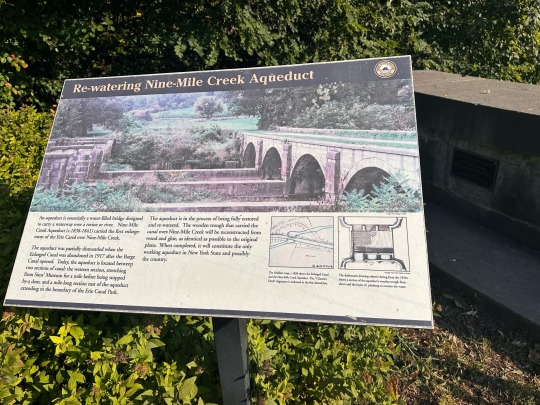
We passed the state fairgrounds near Syracuse. It ended Sept 4th, but it had been going in full force as we passed it on the train last Thursday. There was actually a train stop there.
As we came into Syracuse, we had a nice view of Onondaga Lake and the Inner Harbor (no picture).


The bridge got us over the train tracks. I got a photo op and Rob got a train - win-win.
The ride through Syracuse was pretty easy. We went through the lake front area and what felt like the middle of town with some cute restaurants (right along I-690). We didn’t stop other to run into a bike shop on the east side of town. Too late for breakfast and too early for lunch. The ride on the east side of Syracuse was interesting with the trail in the median of a fairly large roadway. It had lots of stops to navigate the traffic, but at least it had bike signals to get us through safely.

We did take a detour today to the Green Lakes State Park. There are 2 glacier formed lakes that are an amazing blue green color. I read it is that color because of the high amounts of calcium carbonate in the water. We ran into a couple on the trail today, and they explained that it is very unusual lake because it is a meromictic lake, meaning it has no seasonal lake mixing. We rode our bikes around the lake, and it was just gorgeous. At one end they had a “beach” and swimming. The swimming looked refreshing, but the beach was …. dirt.



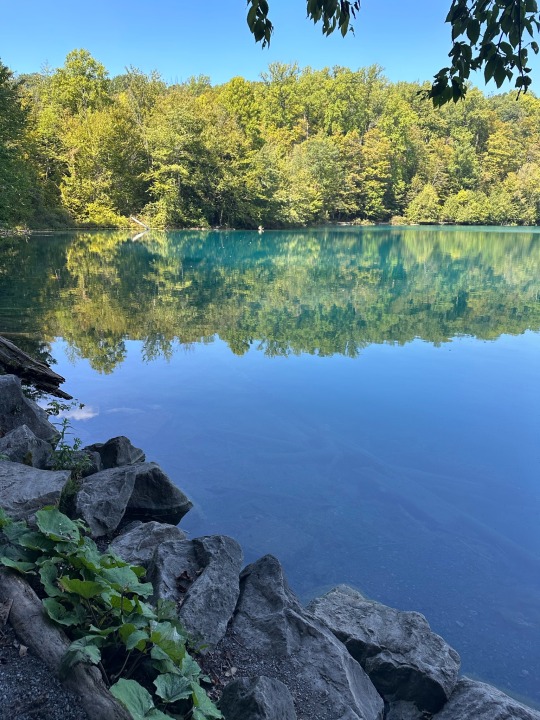
Over 43 miles with the detours. Forgot to mention that the last 20 miles or so today was in the Old Erie Canal State Historic Park. The trails were great and well maintained.
0 notes
Photo
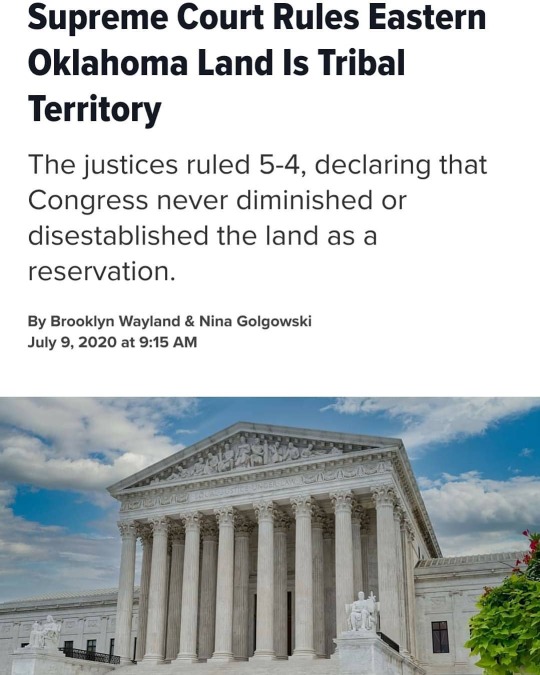
Another huge win for our ancestors, elders, and the indigenous community. #FirstNation #Nativehistory #NativeAmerican #Civilized #Tribes #Oklahoma #Cherokee #Muskogee #Creek #Choctaw #Commanche #Seminole #Iroquois #Mohawk #Onondaga #Oneida #Cayuga #Seneca #SupremeCourt #USSC (at United States) https://www.instagram.com/p/CCb2XouB-72/?igshid=1vhqgs8z64bqk
#firstnation#nativehistory#nativeamerican#civilized#tribes#oklahoma#cherokee#muskogee#creek#choctaw#commanche#seminole#iroquois#mohawk#onondaga#oneida#cayuga#seneca#supremecourt#ussc
0 notes
Photo
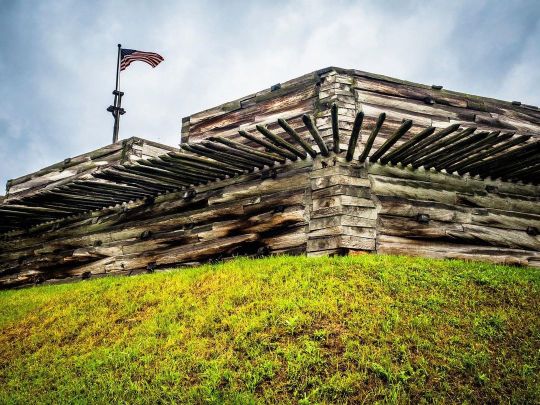
Happy Birthday to Fort Stanwix National Monument! @fort.stanwix.nps #OTD in 1976, Fort Stanwix opened to the public (having been created as a monument in 1935) and has been sharing the stories of this region for 46 years. ❓ ❓ ❓ Fort Stanwix (also known as Fort Schuyler) sits on a trail that connected the Mohawk River and Wood Creek, used for thousands of years by the Six Nations Confederacy of the Mohawk Valley. Fort Stanwix played a vital role in the expansion of this region and rich resources it contains, as well as the hold the stories of the Seneca, Cayuga, Onondaga, Oneida, Mohawk, and Tuscarora nations. ⭐️ ⭐️ ⭐️ "Known as "the fort that never surrendered," Fort Stanwix, under the command of Col. Peter Gansevoort, successfully repelled a prolonged siege, in August 1777, by British, German, Loyalist, Canadian, and American Indian troops and warriors commanded by British Gen. Barry St. Leger. The failed siege combined with the battles at Oriskany, Bennington, and Saratoga thwarted a coordinated effort by the British in 1777, under the leadership of Gen. John Burgoyne, to take the northern colonies, and led to American alliances with France and the Netherlands. Troops from Fort Stanwix also participated in the 1779 Clinton-Sullivan Campaign and protected America's northwest frontier from British campaigns until finally being abandoned in 1781." - nps.gov/fost 📍: Fort Stanwix National Monument, NY 📅 : July 2017 #IBrakeForBrownSigns #nationalparkgeek #RecreateResponsibly ........................................ (at Fort Stanwix National Monument) https://www.instagram.com/p/Ca-ORjzpcER/?utm_medium=tumblr
2 notes
·
View notes
Text
Braiding Sweetgrass, Robin Wall Kimmerer
“When the salt wells near the factory ran out, Allied Chemical used solution mining to access underground salt deposits up near the headwaters. The company pumped water into the subterranean deposits, dissolved them away, and then pumped the brine miles down the valley to the Solvay plant. The brine line was run through the remaining territory of the Onondaga Nation, where breaks in the line ruined the well water. Eventually the dissolved salt domes collapsed underground, creating holes through which the groundwater pushed with high pressure. The resulting gushers created the mudboils that flow downstream and fill the lake with sediment. The creek that was once a fishery for Atlantic salmon, a swimming hole for kids, and a focal point of community life now runs as brown as chocolate milk. Allied Chemical and its successors deny any role in the formation of the mudboils. They claim it was an act of God. What kind of God would that be?”
#braiding sweetgrass#robin wall kimmerer#books#environmentalism#ecology#indigenous authors#literature#pollution#environmental justice
29 notes
·
View notes
Text
42 governors, including at least 19 Republicans, consent to resettle MORE refugees
How to turn red states blue, and first world third. Trump should have ended the fraudulent refugee resettlement program on day one in office.
youtube
Read more at Refugee Resettlement Watch via Three More Republican Governors Turn on Trump, Cave to Leftists on Refugee Program Reform
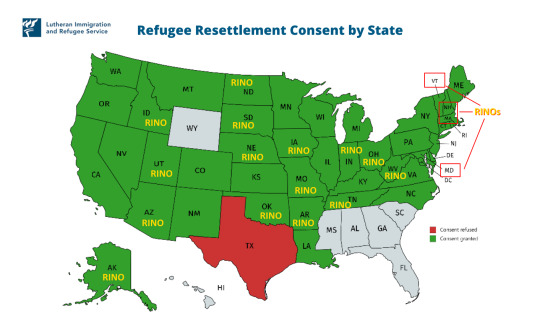
The list below is from one of the taxpayer-funded enemies within who is flooding America with refugees and flipping cowardly, weak-kneed Republicans (in name only). via Lutheran Immigration and Refugee Services
Governors who have given consent
Gov. Wolf (D-PA) Public Statement and Letter of Consent
Gov. Whitmer (D-MI) Public Statement and Letter of Consent
Gov. Mike DeWine (R-OH) Public Statement via Spokesperson
Gov. Murphy (D-NJ) Public Statement and Letter of Consent
Gov. Polis (D-CO) Public Statement and Letter of Consent
Gov. Grisham (D-NM) Letter of Consent
Gov. Baker (R-MA) Public Statement and Letter of Consent
Gov. Kate Brown (D-OR) Letter of Consent and Tweet
Gov. Gary Herbert (R-UT) Letter of Consent (& Salt Lake Tribune Article)
Gov. Jay Inslee (D-WA) Letter of Consent
Gov. Burgum (R-ND) Public Statement, Consent Letter, and AP article
Gov. Northam (D-VA) Press Release and Letter of Consent
Gov. Sununu (R-NH) Letter of Consent and AP Article
Governor Steve Bullock (D-MT) Letter of Consent
Governor Laura Kelly (D-KS) Letter of Consent and Press Release
Governor Ducey (R-AZ) Letter of Consent and Article
Governor Cooper (D-NC) Letter of Consent
Governor Lamont (D-CT) Letter of Consent
Governor John Carney (D-DE) Letter of Consent
Governor Kim Reynolds (R-IA) Letter of Consent
Governor Tim Walz (D-MN) Letter of Consent and Press Release
Governor Gina Raimondo (D-RI) Letter of Consent
Governor Eric Holcomb (R-IN) Letter of Consent
Governor J.B. Pritzker (D-IL) Public Statement with Expected Consent and Letter of Consent
Governor Bill Lee (R-TN) Letter of Consent, Press Release, and Letter to the Lt. Governor & State Speaker of the House
Governor Tony Evers (D-WI) Letter of Consent
Governor Janet Mills (D-ME) Letter of Consent
Governor Kevin Stitt (R-OK) Letter of Consent
Governor Pete Ricketts (R-NE) Anticipated Consent via Spokesman
Governor Steve Sisolak (D-NV) Letter of Consent
Governor Kristi Noem (R-SD) Article on Consent
Governor Bashear (D-KY) anticipated consent
Governor Justice (R-WV) Letter of Consent & Press Release
Governor Edwards (D-LA) Letter of Consent and article
Governor Hutchinson (R-AR) Letter of Consent and article
Governor Newsom (D-CA) Letter of Consent
Governor Parson (R-MO) Letter of Consent and article
Governor Little (R-ID) Letters of Consent by county and article
Governor Larry Hogan (R-MD) Letter of Consent and article
Governor Dunleavy (R-AK) Article on Consent
Governor Cuomo (D-NY)
Governor Phil Scott (R-VT) Article on Consent
Local Authorities who have given consent*
*Non-exhaustive list
Mayor Ben Walsh – Syracuse, NY
Mayor Jacob Frey Tweet of consent– Minneapolis, MN
Mayor Andrew Ginther– Columbus, OH
Mayor Steve Schewel and Letter of Consent – Durham, NC
Mayor Jenny Durkan Letter of Consent – Seattle, WA
Mayor Nancy Vaughan Letter of Consent – Greensboro, NC
Alexandria City Council resolution, statement from Mayor Justin Wilson – Alexandria, VA
Durham County, NC Board of Commissioners – Letter of Consent
Knoxville City Council Consent – Knoxville, TN
Fort Worth Mayor Betsy Price (R) letter to Governor Abbott
Erie County, NY – Letter of Consent
Mayor Byron Brown Letter of Consent – Buffalo, NY
Mayor Patti Garrett Letter of Consent – Decatur, GA
Chatham County, GA – Letter of Consent
Polk County, IA – Letter of Consent
Warren County, KY – Letter of Consent
Daviess County, KY – Letter of Consent
Mayor Nicole LaChapelle Letter of Consent – Easthampton, MA
Mayor Alex B. Morse Letter of Consent – Holyoke, MA
Mayor David Narkewicz Letter of Consent – Northampton, MA
Mayor Kimberly Driscoll Letter of Consent – Salem, MA
Mayor John Engen Letter of Consent – Missoula, MT
Mayor David Engen Letter of Consent – Grand Forks, ND
Mayor Frank G. Jackson Letter of Consent – Cleveland, OH
Mayor Michael P. Summers Letter of Consent – Lakewood, OH
Mayor Timothy J. DeGeeter Letter of Consent – Parma, OH
Mayor Nan Whaley Letter of Consent – Dayton, OH
Erie County Pennsylvania – Letter of Consent
Mayor Jorge O. Elorza Letter of Consent – Providence, RI
Bexar County, TX – Letter of Consent
Mayor Ron Nirenberg Letter of Consent – San Antonio, TX
Mayor Levar Stoney Letter of Consent – Richmond, VA
Kalamazoo County, MI – Letter of Consent
Kandiyohi County, MN – Letter of Consent
Pima County, AZ Letter of Consent – Pima County, AZ
Mayor Kim Maggard Letter of Consent – Whitehall, OH
Mayor Betsy Price Letter of Consent – Fort Worth, TX
Mayor John Dailey Letter of Consent and Proclamation – Tallahassee, FL
Burleigh County, ND – Commission Vote
Franklin County, OH – Final Resolution / Commission and Article
Mayor of Dallas Letter of Consent – Dallas, TX
Mayor Thomas McNamara Letter of Consent – Rockford, IL
Winnebago County, IL – Letter of Consent
DuPage County, IL – Letter of Consent
Mayor Jim Bouley Letter of Consent – Concord, NH
Mayor Kate Gallego Letter of Consent – Phoenix, AZ
Mayor Jonathan Rothschild Letter of Consent – Tucson, AZ
Mayor Edward Terry Letter of Consent – Clarkston, GA
Mayor William Reichelt Letter of Consent – West Springfield, MA
City of Ypsilanti, MI – Council Resolution and Consent
Olmsted County, MN Letter of Consent
Mayor Lyda Krewson Letter of Consent – St. Louis, MO
Mayor Mary-Ann Baldwin Letter of Consent – Raleigh, NC
Cass County, ND – Letter of Consent
Mayor Alvin Brandl Letter of Consent – Madison, NE
Mayor Jim Donchess Letter of Consent – Nashua, NH
Mayor Joyce Craig Letter of Consent – Manchester, NH
Hamilton County, OH – Letter of Consent
Montgomery County, OH – Letter of Consent
Mayor Lucy Vinis Letter of Consent – Eugene, OR
Mayor Christine Lundberg Letter of Consent – Springfield, OR
Mayor Wayne Evans Letter of Consent – Scranton, PA
Mayor Andy Berke Letter of Consent – Chattanooga, TN
Cache County, UT – Letter of Consent
Salt Lake County, UT – Letter of Consent
Weber County, UT – Letter of Consent
Fairfax County, VA – Letter of Consent
Mayor Sherman Lea, Sr. Letter of Consent – Roanoke, VA
Mayor Kelli Linville Letter of Consent – Bellingham, WA
Pierce County, WA – Letter of Consent
Mayor Satya Rhodes-Conway Letter of Consent – Madison, WI
Mayor Fischer Letter of Consent – Louisville, KY
Mayor Kenneth Miyagishima Letter of Consent – Las Cruces, NM
Mayor William Peduto Letter of Consent – Pittsburgh, PA
Mayor Mark Behnke Letter of Consent – Battle Creek, MI
Macomb County, MI – Letter of Consent
Washtenaw County, MI – Consent Resolution
Wayne County, MI – Letter of Consent
Oakland County, MI – Letter of Consent
Mayor David Berger Letter of Consent – Lima, OH
Mayor Martin Walsh Letter of Consent – Boston, MA
Mayor Joe Hogsett Letter of Consent – Indianapolis, IN
Dallas County, TX – Letter of Consent
Ingham County, MI – Consent Resolution
Mayor Stephen C.N. Kepley Letter of Consent – Kentwood, MI
Las Vegas, NV – Article on Consent
Henderson, NV – Article on Consent
Reno, NV – Article on Consent
Wake County NC – Letter of Consent
Buncombe County NC – Letter of Consent
Onondaga County, NY – Article on Consent
Cook County, MN – Article on Consent
Cumberland County, PA – Article on Consent
Ramsey County, MN – Article on Consent
Minnehaha County, SD – Article on Consent
Boulder County, CO – Article on Consent
Grand Traverse County, MI – Article on Consent
New Castle County, DE – Article on Consent
Utah County, UT – Article on Consent
Otter Tail County, MN – Article on Consent
Twin Falls County, ID – Article on Consent
Spokane County, WA – Article on Consent
Dane County, WI – Press Release on Consent
Boone County, MO – Article on Consent
Mecklenburg County, NC – Article on Consent
Ann Corcoran of RRW blog notes:
I continue to argue that these nine contractors are the heart of America’s Open Borders movement and thus there can never be long-lasting reform of US immigration policy when these nine un-elected phony non-profits are paid by the taxpayers to work as community organizers pushing an open borders agenda.
Church World Service (CWS)
Ethiopian Community Development Council (ECDC) (secular)
Episcopal Migration Ministries (EMM)
Hebrew Immigrant Aid Society (HIAS)
International Rescue Committee (IRC) (secular)
US Committee for Refugees and Immigrants (USCRI) (secular)
Lutheran Immigration and Refugee Services (LIRS)
United States Conference of Catholic Bishops (USCCB)
World Relief Corporation (WR)
120 notes
·
View notes
Video
youtube
How To Find Flint! ; BUSHCRAFT expedition! (Full Movie) Flintknapping and Journey to the Source! Finding flint & identifying flint THE FULL AND COMPLETE EPIC MOVIE! chert rock cobbles for flint knapping primitive stone survival tools. our rockhounding road trip camping adventure in upstate New York, we show how I find flint and how to identify chert / flint. ~~~ Flint Knapping Primitive Survival Skills - 2019 Summer Rock Hounding Road Trip Camping Adventure TravelVlog ~~~~ Day 2 ! Fun fun fun! Traveling around upstate New York finding, identifying, and quarrying chert and flint for crafting primitive stone tools! we traverse many creeks and rivers looking for flint / chert cobbles. We find Onondaga chert, esopus chert, and some type of blue-grey chert... and limestone! Jay talks about how he finds flint and how to identify flint. Along the way, we see some wildlife, have some laughs, make a few statements about protecting the environment, and jay demonstrates a secret master flintknapper technique. DAY 1: Day 1: The Summer hunt for flint begins! We head out on another road trip camping adventure to rockhound and look for new sources of raw chert and flint for crafting authentic traditional primitive tools. In this camping road trip travel vlog series, we will show how we find flint / how to find chert. On day 1, we saw some beautiful scenery and wildlife. We set up camp and cook a nice breakfast of bush cakes and then did a bit of fishing and flint knapping before heading out to find chert tools stone. Jay explains more about how it feels to walk in the footsteps of the ancestors and practice primitive skills and he talks about how he learned flintknapping as he demonstrates flint knapping a glass arrowhead. We also test out Bob Hansler's survival card and attempt to fish wild trout in a clear blue creek. Score! Finding & identifying New York creek chert cobble & rock outcrops. Day 3 of our rockhounding camping road trip outdoors adventure, we show how to identify flint and how to find flint in the wild. ~~~ DAY 3: Finding Eastern Onondaga Cobble & Esopus Chert Outcrops - Flint Knapping Primitive Survival Skills - 2019 Summer Rock Hounding Road Trip Camping Adventure Travel Vlog ~~~~ The hunt for chert flint continues! We travel around upstate New York finding, identifying, and quarrying chert for bushcrafting primitive stone tools! On day 3 of our rock hound road trip, we explore the mountains and rivers to find flint / chert cobbles and outcrops. We find big chunks and veins of Onondaga chert and Esopus chert. Along the way, we see some wildlife, heard random explosions, discover a stinky sulfur healing spring, have some laughs, and settle into a new campsite to relax and wait out the storms. DAY 4: Exploring the Eastern Woodlands- Hiking Camp and Cook - 2019 Summer Rock Hounding Road Trip Camping Adventure TravelVlog ~~~~ On day 4 of our camping road trip through upstate New York, we take a break from finding flint to explore the outdoors. We a walk along the shore of the lake, then hike up into the Appalachian mountains. Watch and see what the eastern woodlands look like during our forest hike in the woods and then join us for a camp and cook! Nature and laughter is the best medicine, so we soak it all in and have some fun! The healing power of nature's beauty and laughing is real! This day was so refreshing. It was...... magical. ;) ~~~~~~~~~~~~~~~~~~~~~~ Traveling around finding, identifying, and quarrying Flint for bushcrafting Fire steel starting and primitive stone tools! Jay tests flintknapping limestone and we visit an 1800s blacksmith shop and historic farmstead! ~~~ DAY 5: Quarrying Flint & Flintknapping Limestone?! - Flint Knapping Primitive Skills - 2019 Summer Rock Hounding Road Trip Camping Adventure Travel Vlog ~~~~ The summer hunt for chert & flint wraps up! On day 5 of our rock hound chert collecting road trip, we explore rivers and creeks to find flint / chert cobbles and outcrops. We find eastern Onondaga, snake hill, chalcedony, normanskill, and esopus chert. Jay demonstrates that limestone can flintknapped in a survival situation to use for primitive stone tools. Along the way, we see some wildlife, waterfalls, and visit an old farmstead and blacksmith shop from the 1800s! As we head back home, Jay talks about his craft and the effort required to flint knap and quarry traditionally. footage from 2019. Let us know what you think! Like, Comment, Share, and Subscribe! Follow us online at: Instagram: https://ift.tt/2RW5sES Facebook: https://ift.tt/2KWOWU9 Get our handcrafted primitive stone knives and outdoor gear on Etsy at: https://ift.tt/2IhP38l -~-~~-~~~-~~-~- Let us know what you think! Like, Comment, Share, and Subscribe or follow us online at: Instagram: https://ift.tt/2RW5sES Facebook: https://ift.tt/2KWOWU9 Get our handcrafted primitive stone knives and outdoor gear on Etsy at: https://ift.tt/2IhP38l
2 notes
·
View notes
Photo
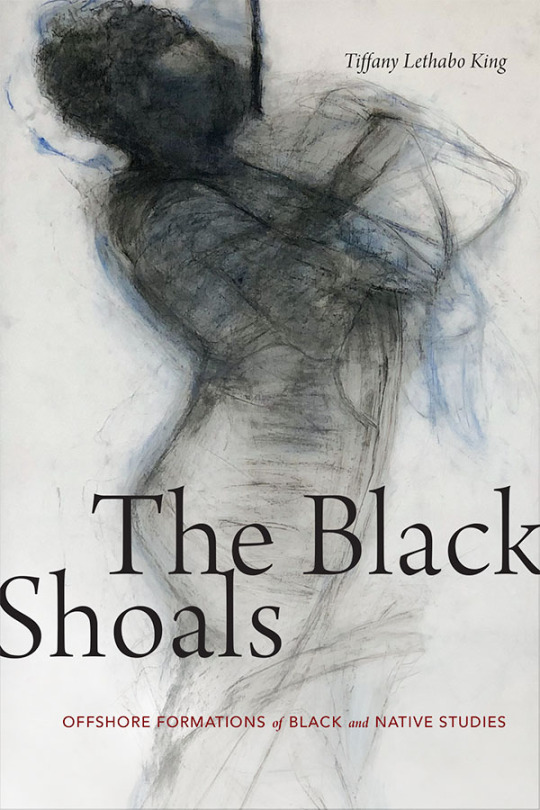

The Black Shoals: Offshore Formations of Black and Native Studies
Tiffany Lethabo King (2019)
In The Black Shoals Tiffany Lethabo King uses the shoal—an offshore geologic formation that is neither land nor sea—as metaphor, mode of critique, and methodology to theorize the encounter between Black studies and Native studies. King conceptualizes the shoal as a space where Black and Native literary traditions, politics, theory, critique, and art meet in productive, shifting, and contentious ways. These interactions, which often foreground Black and Native discourses of conquest and critiques of humanism, offer alternative insights into understanding how slavery, anti-Blackness, and Indigenous genocide structure white supremacy. Among texts and topics, King examines eighteenth-century British mappings of humanness, Nativeness, and Blackness; Black feminist depictions of Black and Native erotics; Black fungibility as a critique of discourses of labor exploitation; and Black art that rewrites conceptions of the human. In outlining the convergences and disjunctions between Black and Native thought and aesthetics, King identifies the potential to create new epistemologies, lines of critical inquiry, and creative practices.
Speaking of Indigenous Politics: Conversations with Activists, Scholars, and Tribal Leaders
edited by J. Kēhaulani Kauanui
Many people learn about Indigenous politics only through the most controversial and confrontational news: the Standing Rock Sioux Tribe’s efforts to block the Dakota Access Pipeline, for instance, or the battle to protect Bears Ears National Monument in Utah, a site sacred to Native peoples. But most Indigenous activism remains unseen in the mainstream—and so, of course, does its significance. J. Kēhaulani Kauanui set out to change that with her radio program Indigenous Politics. Issue by issue, she interviewed people who talked candidly and in an engaging way about how settler colonialism depends on erasing Native peoples and about how Native peoples can and do resist. Collected here, these conversations speak with clear and compelling voices about a range of Indigenous politics that shape everyday life.
Land desecration, treaty rights, political status, cultural revitalization: these are among the themes taken up by a broad cross-section of interviewees from across the United States and from Canada, Mexico, Chile, Bolivia, Peru, Australia, and New Zealand. Some speak from the thick of political action, some from a historical perspective, others from the reaches of Indigenous culture near and far. Writers, like Comanche Paul Chaat Smith, author of Everything You Know about Indians Is Wrong, expand on their work—about gaming and sovereignty, for example, or protecting Native graves, the reclamation of land, or the erasure of Indian identity. These conversations both inform and engage at a moment when their messages could not be more urgent.Contributors: Jessie Little Doe Baird (Mashpee Wampanoag), Omar Barghouti, Lisa Brooks (Abenaki), Kathleen A. Brown-Pérez (Brothertown Indian Nation), Margaret “Marge” Bruchac (Abenaki), Jessica Cattelino, David Cornsilk (Cherokee Nation), Sarah Deer (Muskogee Creek Nation), Philip J. Deloria (Dakota), Tonya Gonnella Frichner (Onondaga Nation), Hone Harawira (Ngapuhi Nui Tonu), Suzan Shown Harjo (Cheyenne and Hodulgee Muscogee), Rashid Khalidi, Winona LaDuke (White Earth Ojibwe), Maria LaHood, James Luna (Luiseño), Aileen Moreton-Robinson (Quandamooka), Chief Mutáwi Mutáhash (Many Hearts) Marilynn “Lynn” Malerba (Mohegan), Steven Newcomb (Shawnee/Lenape), Jean M. O’Brien (White Earth Ojibwe), Jonathan Kamakawiwo‘ole Osorio (Kanaka Maoli), Steven Salaita, Paul Chaat Smith (Comanche), Circe Sturm (Mississippi Choctaw descendant), Margo Taméz (Lipan Apache), Chief Richard Velky (Schaghticoke), Patrick Wolfe.
5 notes
·
View notes
Photo
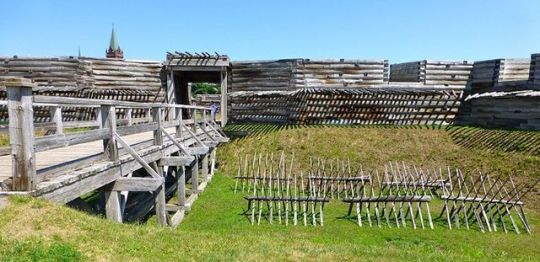
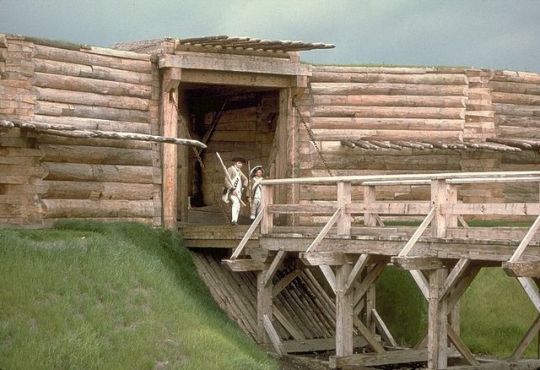
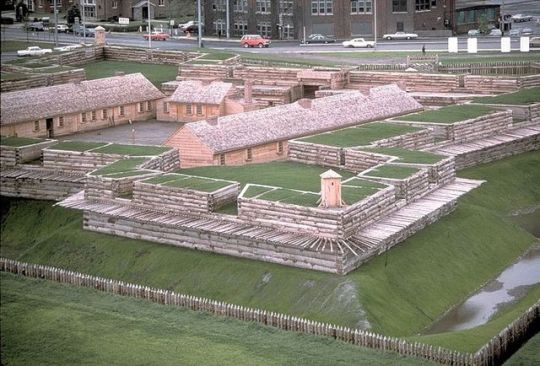
Fort Stanwix.
Fort Stanwix was constructed in 1758 to guard a portage between the main waterway southeastward to the Atlantic seacoast, down the Mohawk and Hudson rivers, and an important interior waterway northwestward to Lake Ontario, down Wood Creek and Oneida Lake to Oswego.
In 1768, Fort Stanwix was the site of an important treaty conference between the British and the Iroquois, arranged by William Johnson. By the time of this treaty, the fort had become dilapidated and inactive. The purpose of the conference was to renegotiate the boundary line between Indian lands and white settlements set forth in the Proclamation of 1763. The British government hoped a new boundary line might bring an end to the rampant frontier violence, which had become costly and troublesome. Indians hoped a new, permanent line might hold back white colonial expansion.
The final treaty was signed on November 5 and extended the earlier proclamation much further west. The Iroquois had effectively ceded Kentucky to the whites. However, the tribes who actually used the Kentucky lands, primarily Shawnee, Delaware, and Cherokee, had no role in the negotiations. Rather than secure peace, the Fort Stanwix treaty helped set the stage for the next round of hostilities.
Fort Stanwix was abandoned in 1768 and allowed to go to ruin.
The fort was reoccupied by Colonial troops under the command of Colonel Elias Dayton on July 12, 1776. They began reconstruction and renamed it Fort Schuyler, although many continued to call it Fort Stanwix. Colonel Peter Gansevoort took over command of the fort on May 3, 1777.
On August 3, 1777, the fort was besieged by The King's 8th Regiment of Foot, Loyalists, and Indians, under the command of Brigadier General Barry St. Leger, as part of a three-pronged campaign to divide the American colonies. Gansevoort refused the terms of surrender offered by the British, and the siege commenced.
According to local folklore, when the Colonial troops raised the flag over the fort on August 3, 1777, it was the first time that the Flag of the United States was flown in battle. It is more likely that the flag flown at Fort Schuyler was one that consisted only of thirteen stripes, an early version of the Flag of New York, or the Grand Union Flag.
The Battle of Oriskany was fought a few miles away when an American relief column, led by General Nicholas Herkimer, was ambushed by Tories and their Indian allies. While many of the besiegers were attending to that battle, the defenders of the fort sallied forth and attacked the enemy camp, looting and destroying enemy stores. Demoralized and reduced in strength, the British withdrew when they heard reports of the approach of yet another relief column, led by General Benedict Arnold. The British forces withdrew through Canada and joined Burgoyne's campaign at Fort Ticonderoga.
The British failure to capture the fort and proceed down the Mohawk Valley was a severe setback and helped lead to the defeat of General John Burgoyne at the Battle of Saratoga.
In April 1779, an expedition from Fort Schuyler against the Onondaga people was begun by the Continental Army led by Col. Goose Van Schaick.
The fort burned to the ground on May 13, 1781 and was not rebuilt. It was abandoned and the garrison took up quarters at Fort Herkimer.
A second Treaty of Fort Stanwix was conducted at the fort between the Americans and the Indians in 1784. During the War of 1812 a blockhouse was built on the parade ground. Beginning in 1828 the fortifications were dismantled.
The fort was designated a National Monument on August 21, 1935. Between 1974 and 1978 the National Park Service reconstructed the fort; a new visitor center was added in 2005. The monument is currently open year around, operated by the National Park Service.
#fort stanwix#seven years war#French and indian war#star fort#history#military history#American history#british army#American revolution#revwar#American war of independence#war of 1812
247 notes
·
View notes
Text
Journey Through Languages project: languages of North America
Whew -- I don’t think I’ve ever squeezed so many distinct language families onto only one list (well, I didn’t actually bother putting listing any of the Wintuan and Chumashan languages since they’re pretty much all extinct and easily available information is sparse), plus some language isolates on the side, but here are what look to me like all of the remaining languages native to North America. (Some language families such as Uzo-Aztecan, which clearly have some languages spoken in southwest US will be included on the Central American Languages list.) As usual it became a bit hard to pick and choose, especially given how many of the languages shown on Wikipedia are extinct yet have detailed pages, and also given my biases as someone who grew up in America and is curious about the languages that used to be spoken in various familiar places.
Haida
Na-Dene languages
Tlingit*
Athabaskan languages
Dena’ina
Tanacross
Tutchone
Gwich’in
Kaska
Slavey
Dogrib
Chipewyan
Babine-Witsuwit’en
Carrier
Pacific Coast Athabaskan languages
Hupa
Southern Athabaskan languages
Mescalero-Chiricahua
Navajo*
(Western) Apache
Wakashan languages
Haisla
Kwak’wala
Salishan languages
Nuxalk (Bella Coola)
Comox
Halkomelem
Shuswap
Lillooet
Thompson
Okanagan
Kutenai
Penutian languages
Sahaptin
Wintuan languages
Chumashan languages
Algic languages (Proto-Algic)
Algonquian languages (Proto-Algonquian)
Plains Algonquian languages
Blackfoot*
Arapaho
Cheyenne
Central Algonquian languages
Cree*
Menominee
Ojibwe*
Potawatomi
Fox*
Shawnee
Miami-Illinois
Eastern Algonquian languages
Mi’kmaq
Abenaki
Maliseet-Passamaquoddy
Massachusett
Delaware*
Siouan languages
Crow*
Hidatsa
Sioux
Lakota (Sioux)
Dakota (Sioux*)
Assiniboine
Stony
Winnebago
Osage*
Iroquoian languages (Proto-Iroquoian)
Onondaga
Cayuga
Seneca*
Oneida
Mohawk*
Tuscarora
Cherokee*
Caddoan languages
Caddo
Wichita
Tanoan languages
Jemez
Taos
(Southern) Tiwa
Tewa
Yuci
Muskogean languages
Chickasaw*
Choctaw*
Muscogee (Creek*)
Mikasuki (Seminole)
Alabama
Koasati
Tunica
Keres
Hokan languages
Yuman–Cochimí languages
Quechan
Maricopa
Mojave
Seri
Tol
Zuni
3 notes
·
View notes
Text
woodland trails sussex
charles e burchfield nature & art center
sunshine park
wendt beach park
mill road park
kinzua rail viaduct
five mile park tucumcari
five mile park tucumari pool
cazenovia creek wildlife management area
harlem road park
dorrance park
switzer park
hillery park
brookdale park
children's memorial park
raymond park
honeycrest playground
dartwood park
orchard acres park
eiffel park
cheektowaga volunteer firemen's park
bailey peninsula natural habitat park
greenway nature trail
keysa park
heritage trail
meadow lea park
westwood park
walden pond park
port dalhousie waterfront trail
cranberry lake preserve
kenneglenn scenic and nature preserve
orchard hill nature center
dater mountain nature park
shagbark nature park
hunters creek county park
walker's creek
bell slip
dufferin islands nature area
rolin t grant gulf wilderness park
rosberg family park
larkin woods/franklin gulf
stevensville conservation area
golden orchard park
canal valley
rouge valley conservation center
wilma quinlan nature preserve
orchard hills park
merritt island park
niagara regional native center
victoria junction
humberstone marsh conservation area
siamese ponds wilderness
green ribbon trail
heartland forest nature experience
louth conservation area
larry delazzer nature park
marcy's woods
rouge national urban park
mud lake conservation area
heaven hill trails
rockway conservation area
tillman road wildlife management area
great baehre swamp wildlife management area
ellicott creek trail way park
hunters creek county park
walton woods park
swallow hollow
tow path park
darien lakes state park
tonawanda wildlife management area
tinker nature park/hansen nature center
panama rocks scenic park
turkey hill overlook trail
chimney bluffs state park
midway state park
great baehre conservation park
pop warner rail trail
laclair kindel wildlife sanctuary
ricketts glen
falls trail benton pa
delaware water gap national recreation area
shoshone park
hudson highlands state park
tucquan glen nature preserve
whitewater challengers
george w child's park
lytle nature preserve
shawnee state park
french creek state park
birdsong parklands
union canal tunnel park
hickory hollow natural area preserve
bushy run battlefield
sodus point new york
codorus state park
elizabeth a morton national wildlife refuge
woodward cave
friends of memorial lake and swarta state parks
mason dixon trail
conewago recreation trail
houghton park
kaaterskills falls trail head
storm king state park
frank e jadwin memorial state forest
abandoned restrooms lafayette square
shelton square comfort station
lafayette square comfort station
ps 75 abandoned
j.n. adam memorial hospital
sattler theatre
rail yard through tifft
jackson sanatorium
gallagher beach
gallagher beach silo
buffalo audubon society
town of lockport nature trail
abandoned roswell springville
witchs grave south of springville on the road walmart is on
buildings at intersection of west ave & tonawanda st near niagara
abandoned brylin in alden
ward road and niagara falls boulevard bell aircraft
perry projects abandoned
south long beach
kings park psychiatric center
floyd bennett field
clarence escarpment sanctuary
fort tilden
fort totten
flooded gypsum mines around old peanut line clarence
onondaga escarpment caves
landstone drive mansion abandoned clarence
blackrock/riverside train tracks
clarence bike path
abandoned buffalo china building
clarence nature center
bassett park
75 hayes place buffalo
abandoned art deco train terminal
the gel mac silo
abandoned millard fillmore gates hospital
delta reservoir
castle on the hill/physical culture hotel in dansville
doodletown
elko quaker bridge
love canal
concrete central elevator
southwick beach state park
ray bay
lake erie beach
split rock falls
otter falls
stony kill falls
vernooy falls
enfield falls
buttermilk falls
dunkley falls
bournes beach
the old sea plane ramp at lasalle park
murder creek
new ireland
frontier town schroon lake
rt. 77 lewiston road east of alabama
bethlehem steel lackawanna plant
onoville
kinzua dam
oswego new york hamlet
parksville
red house
iron island museum
venus fountain statue wolcott
worlds largest pancake griddle penn yan
central terminal buffalo
mount st mary's nursing home niagara falls
hh richardson complex
niagara falls police station ontario
st ann's cathedral buffalo
toronto power generating station ontario
mutual riverfront park
penn dixie fossil park & nature preserve
gorcica field
chestnut ridge park commissioner's cabin
eagle crest
seneca bluffs
erie county forest
buffalo harbor state park
wilkeson point
knox farm state park
eighteen mile creek lake
mountain meadows park
elma meadows park
hunters creek county park
como lake park
broderick park
lake erie beach park
windmill point park
ellicott creek park
westwood park
meadow lea park
hobuck flats
colden lakes resort
black rock canal park
town of orchard park skate park
beaver island golf course
town of sardinia music in the park
oppenheim county park
hyde park
reservoir state park
southtown salt cave
knights hide-away park
brook gardens
0 notes